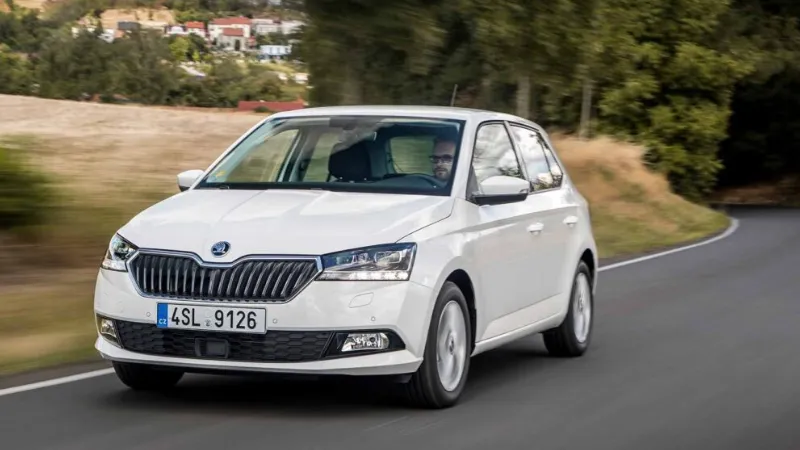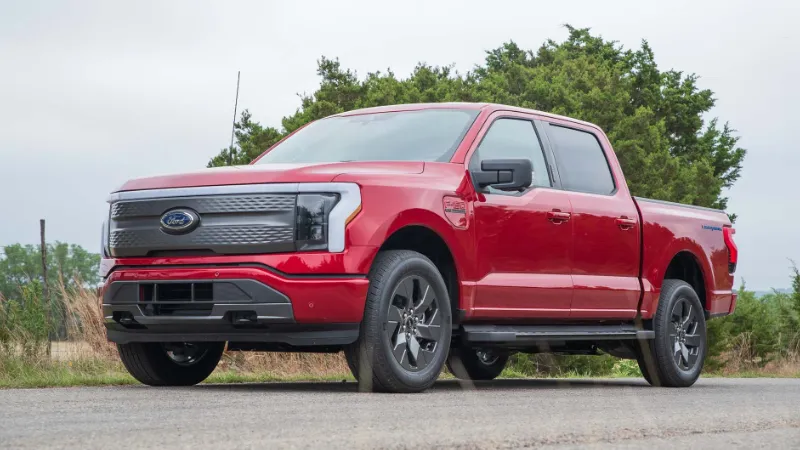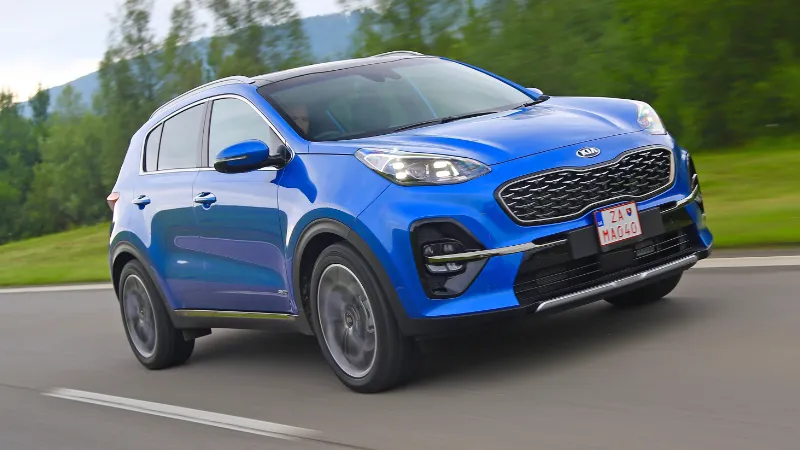The realization that it’s time to buy a car probably comes with an equal mix of excitement and trepidation. So, how much car can I afford? Below will tell you how to get the best deal possible on a car.
Even if you’re a die-hard auto enthusiast, the golden rule of car shopping is that you should never spend more than 35% of your gross annual income on a vehicle. Consider capping the car price at 25% or even 15% of your annual income if all you need is a basic ride to work and back.
Keep reading.
How Much Car Can I Afford?
No exact formula exists to determine how much you can afford, but the short answer is that your new-car payment shouldn’t exceed 15% of your monthly take-home pay. It shouldn’t be more than 10% if you’re renting or buying used. Finding a car that falls between 10% and 15% is important because your monthly payment won’t be your only expense. People frequently forget to account for the costs of fuel and insurance. We put those costs at another 7% of your take-home pay. In conclusion, your overall budget should not be greater than 20% of your monthly gross income.
The 10%-15% rule is a good place to start when trying to determine a target price that won’t have you scrambling to make ends meet each month. However, it may not always be effective. You can get a number that is more specific to you by following these steps.
Calculate Your Automotive Budget
List your monthly expenses in a few minutes. From your monthly take-home pay, deduct rent or mortgage, bills, groceries, child expenses, savings, and spending on entertainment. The amount of car you can afford will then become apparent.
Don’t know what kind of car you can get for this monthly payment (or less)? Look at the Edmunds affordability calculator, which provides a list of cars that fall within the budget you’ve set. Keep in mind that the prices on the calculator results page will change based on the trim level, options, sales tax and registration fees, etc.
Does it seem like you might not be able to afford the purchase? We know that feeling. New vehicles have gotten more expensive over the years and our salaries haven’t kept up. In any case, this amount now represents your automotive budget, which, as we’ve noted, is more than just the monthly payment. Now let’s estimate the price of fuel and insurance.
Determine Your Fuel and Insurance Costs
Before you set out to buy or lease, find out what your fuel expenses will be and what it will cost to insure the vehicle. Based on your location, your driving record, and the car you’ve selected, both costs can be very different. These estimates require some work to produce, but you shouldn’t disregard them. You can choose from a variety of vehicles with the aid of knowing these costs. Others might have higher insurance costs, and some may require more fuel.
On the Fueleconomy.gov website of the EPA, you can find a comprehensive list of fuel economy statistics as well as annual fuel cost projections for both new and used cars.
About the vehicle you’re interested in, speak with your agent or the insurance provider to obtain insurance quotes. A precise estimate ought to be possible. You can also access an online quote option by visiting the auto insurance provider’s website of your choice. Do your monthly fuel and insurance expenses total 7% or less of your gross income? Then you’re OK.
Examine Your Buying Patterns
Recognizing your own car-buying habits, both good and bad, as well as the affordability formula can help you determine the best course of action.
Are you, for instance, the type of person who purchases a car, pays it off, and then keeps it for a while? You would be able to buy a new car because you have a history of making responsible purchases, paying off your debt, and delaying payments. That’s smart.
Do you eventually grow tired of driving a car? Then renting is your best option. What use is a six-year loan if you’re going to trade the car in after the fourth or fifth year? The amount you owe will probably be greater than the value of the car, and you will have to roll it into the next loan. Leasing would be more advantageous because you would pay less each month. You can also save money by leasing a nicer car.
Are you attempting to reach the most financially sound decision possible, to sum up? Then purchase a gently used vehicle, finance it, and keep it for many years. You will have a car that is sufficiently new to put off major repairs for a while because the first owner will bear the brunt of depreciation.
Understand What Kind of Car You Can Afford
To determine how much car you can afford, consider your credit score, down payment, monthly payment, loan term, whether you’re trading in a car, and your monthly payment. Additionally, getting estimates for other car-related expenses like your car insurance or annual maintenance can give you a better picture of how much you’ll spend on your car over time. To understand how each of these influences your car budget, do some research on each factor.
Monthly Payment
Your monthly payment will have a big impact on the kind of car you can afford because it’s advised you spend no more than 10% to 15% of your monthly after-tax income on your car. If your monthly take-home pay is $3,500, your car payment shouldn’t be more than $350 to $525.
You can lower your monthly payment so that your payment better fits your monthly budget by choosing a longer loan term. A longer loan term will, however, result in higher interest payments over time, so keep that in mind.
Down Payment
Your ability to put down a larger deposit on a car enables you to buy a larger vehicle. Since new cars lose value quickly, the majority of experts advise putting at least 20% down on one. A 20% down payment will stop you from going upside-down on your loan in a few years (owing more than your car is even worth).
Loan Term
How much you ultimately spend on your car depends on the loan term, or length, of your loan. Longer loan terms result in lower monthly payments and higher total interest costs, while shorter loan terms result in higher monthly payments but less total interest costs. A loan with a shorter term is preferable, if you can afford it, if you want to pay less overall. However, a longer loan may be able to help you reduce your monthly payment so that it is more manageable.
Trade-in Value
You may be able to buy a more expensive car or reduce your borrowing requirements by trading in your current vehicle. For instance, let’s say you want to spend $22,000 on a car and you want to trade in an $8000 car. Your net car purchase would only be $14,000 if your trade-in had been paid off with that $8,000 in the equation.
If you still owe money on your loan but haven’t paid off your trade-in, the dealer will use some of the trade-in value to pay off the remaining balance. Using the same illustration, your trade-in value would be reduced by $2,000 if you still owed $2,000 on your loan. Your purchase would only then be credited with $6,000, resulting in a $16,000 net price.
Credit Score and Loan Interest
Your credit score affects the interest rate on your auto loan, which ultimately affects how much you pay for your car overall. Lower interest rates are typically associated with better credit scores, but your interest rate can also be influenced by the type of car you’re purchasing. Interest rates on new cars are typically lower than those on used cars.
Consider Your Car Options
It’s a good idea to look into alternative options if you can’t afford the car you need or want in order to achieve your goals without incurring debt. Continue reading to learn how you can afford a car by leasing and buying used.
Leasing
A new car may be the best option for your needs, whether you favor the appearance and feel of a contemporary vehicle or are constantly seeking the latest in automotive technology. However, leasing may be a better choice for you if you discover that you cannot afford the monthly payment for a new car. It is possible to lease the car you want for a lower monthly payment than if you were to buy it, but there are some restrictions to be aware of, such as mileage restrictions and the fact that any money put toward the car won’t have any value when you sell it.
Buying Used
Purchasing a used car is an affordable way to own a car if you don’t care what kind of vehicle you drive or simply want to put your finances first. Used cars typically cost less than new cars, making the monthly payments easier to afford. Additionally, their value also depreciates a lot slower and associated car expenses like insurance tend to be lower.
Buying New
Sometimes all you want is that brand-new car smell. Make sure you do your homework and compare car prices from various dealers if purchasing new is a top priority. Being prepared with the fair market value of the vehicle you want will help you negotiate the best possible price when buying a car. If you have a smaller budget, take into account getting a base model without all the extras.
Why Your Budget is Lower Than You Were Hoping
If your reaction to the Car Affordability Calculator was:
That’s it, bro? Is that the most I have to spend on a car?
Well, you wouldn’t be the first to feel that way.
At my first job, I also experienced that feeling. Everyone I worked with commuted to work in brand-new Mercedes-Benz and BMWs, but according to my budget, the best I could hope for was a used Mazda.
I was earning the same amount of money as them, so what changed? Why, like it seems everyone else on the road, can’t I afford a new Hemi-powered Charger or Lexus crossover?
In actuality, the majority of Americans drive vehicles that they really can’t afford. According to Edmunds, the average loan term for new cars in the first quarter of 2022 was a horrifying 70 months, with an average monthly payment of $648.
This tells us that rather than considering a more affordable car, Americans are pushing out their car loan terms even farther, staying in debt longer, and simply paying way, way too much overall.
Remember, you’re sticking to the 35% rule for several reasons:
- Crossovers, sports cars, and other top-notch vehicles are still available. for under $15,000.
- The possibility of submersion won’t exist.
- All the money you save will be available for investment, allowing you to reach financial independence more quickly and eventually purchase a much nicer car!).
Tips for Getting the Best Deal Possible on a Car
For years, I’ve been purchasing cars for my customers and for my own use. On average, I negotiate and save $3,100 on each car I buy. Dealerships have openly expressed their contempt for me, and their snide texts and emails put me to sleep like a hot cup of tea at night.
In the meantime, here are some of my favorite and most effective tips I’ve put together over the years.
Shop Around for Car Insurance
My 2001 Mazda Miata received two initial car insurance quotes for a total of $200 and $1,000 for a period of six months. Same vehicle, identical goon driving it; 400% price difference.
Every insurance provider sees each driver and car pairing differently, so it absolutely pays to shop around for at least five quotes.
Buy Used Car Seriously
A used car that’s passed a pre-purchase inspection is nearly as good as a brand new car.
It’s even better in some circumstances. A Toyota with 50,000 miles on it will typically outlast a VW, Fiat, or Alfa Romeo with 0 miles on it. The initial build quality is what matters most, and some manufacturers place more emphasis on this than others.
When there isn’t a chip shortage, used cars are also significantly less expensive. If you’re thinking about a Mazda3, look back just a few model years for a significant discount because, on average, cars lose at least 15% of their value annually.
Don’t Pay a Penny for Dealer Extras
Before you sign, dealerships will try to add “recommended extras” onto the invoice price. A $1,000 ceramic coat, a $1,000 GPS anti-theft device, and $100 for nitrogen in the tires are a few examples of these customary expenses.
You can put an Apple AirTag under the seat for $29, apply a ceramic coat yourself for $50, and get nitrogen for free at Costco (oxygen is also acceptable).
Oh, and ask to waive the “documentation fee.” It’s not a fake fee, but dealers overcharge, and many will lower or waive it upon request.
In Fact, Don’t Go to a Dealership at All
For years, car dealerships have used shady negotiation strategies to get you in the door, including adding extra fees, undervaluing trade-ins, and outright lying.
And now, with lower inventory and increasing pressure from Carmax and Carvana, they’re getting bolder and more desperate.
You can still negotiate a good deal with dealerships, but you’ll need to enter the lion’s den ready to fight. Carmax is a far superior option for everyone else.
FAQs
How Much Should Your Car Cost Compared to Your Salary?
It depends on how much money you have left over after paying your bills and other expenses. However, as a general rule, your car payment shouldn’t be more than 15% of your monthly take-home pay after taxes. For instance, if you earn the U.S. median income of $37,773, you could shop for a car that costs up to $472 per month. If you put down at least 10%, you could finance a car for between $27,000 and $30,000 with this amount.
How Much Car Can I Get for $500 a Month?
The amount of your down payment, the interest rate, and the term of the loan all play a role in the answer. Assume you signed a 72-month loan with a 6% APR and no down payment. In that illustration, a car that costs between $25,857 and $28,900 would be yours for $500 per month in payment. With a lease, you could purchase a more expensive vehicle for the same cost, but you wouldn’t be the owner of it once the three-year lease period was over.
Summary: How Much Car Can I Afford?
Even if you’re a die-hard auto enthusiast, the golden rule of car shopping is that you should never spend more than 35% of your gross annual income on a vehicle. Consider capping the car price at 25% or even 15% of your annual income if all you need is a basic ride to work and back.
If you have any questions, please leave a comment. KV Auto tries to give you the best car industry information. Thank you for reading.





